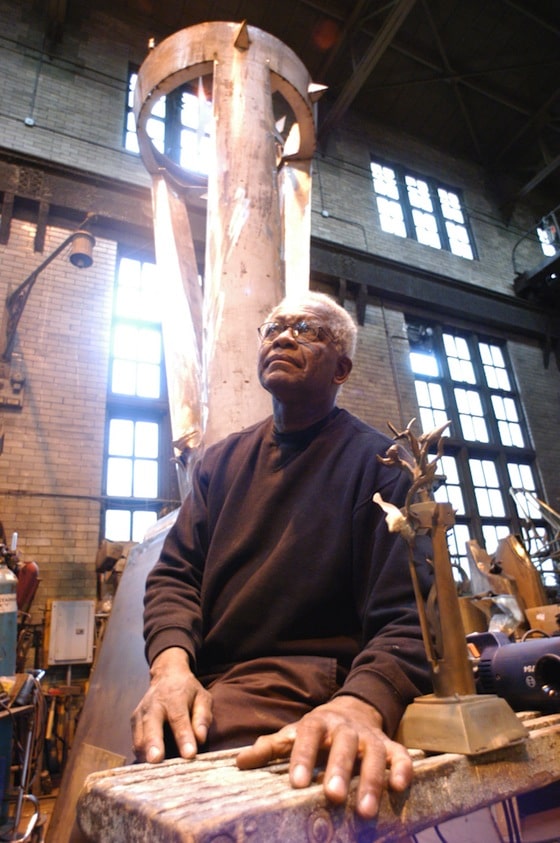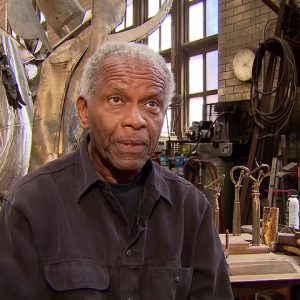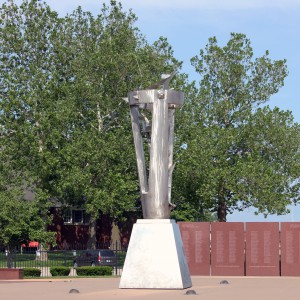Richard Hunt
Richard Hunt is an internationally renowned sculptor. As a public artist, Hunt is known as a creator of abstract metal works, each a unique shrine to the human spirit. He was born September 12, 1935 on Chicago’s South Side. From an early age he was interested in the arts, as his mother was an artist. As a young boy, Hunt began to show enthusiasm and talent in artistic disciplines such as drawing and painting, and also sculpture, an interest that grew as he got older. He developed his skills at the Junior School of the Art Institute and later at the Art Institute of Chicago. Hunt also acquired business sense and awareness of social issues from working for his father in a barbershop. Hunt began to experiment with materials and sculpting techniques, influenced heavily by progressive twentieth-century artists.
This experimentation garnered critically positive response from the art community, such that Hunt was exhibited at the “Artists of Chicago” and “Vicinity Show” and the American Show, where the Museum of Modern Art purchased a piece for its collection. He was the youngest artist to exhibit at the 1962 Seattle World’s Fair, a major international survey exhibition of modern art.
Hunt signature pieces include Jacob’s Ladder at the Carter G. Woodson Library in Chicago and Flintlock Fantasy in Detroit. He was appointed by President Lyndon Johnson as one of the first artists to serve on the governing board of the National Endowment for the Arts and he also served on boards of the Smithsonian Institution. Hunt is the recipient of numerous awards and honorary degrees. The artist has received numerous accolades and recognition throughout his career and was the first African-American artist to have a major solo exhibition at the Museum of Modern Art in New York. His can be found in numerous museums as well as both public and private collections, including The Art Institute of Chicago, the National Gallery and National Museum of American Art in Washington, DC, and The Metropolitan Museum of Art, and the Museum of Modern Art in New York.
He was appointed by President Lyndon Johnson as one of the first artists to serve on the governing board of the National Endowment for the Arts. He has received the Guggenheim, Ford, and Tamarind fellowships, as well as awards from the Art Institute of Chicago. He has produced more than 55 public art projects; these sculptures that can be found throughout the world.
For more information about the artist.


